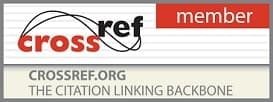2018, Vol. 2 Issue 2, Part A
Role of root block in lumbar spine radiculopathy
Author(s): Dr. Mitul Mistry, Dr. Manish Shah, Dr. Mukesh Kumar Dendor, Dr. Paritosh Solanki and Dr. Shailendrasinh Gohil
Abstract: Introduction: Chronic lumbosacral pain is a common and challenging clinical entity problem in pain management centre. Since its first description by Mixter Barr in 1934, lumbar disc herniation is one of the few abnormality in the lumbar spine, were a clear relationship between the morphological alteration and pain seems to exist while pure mechanical compression was considered previously as a source of sciatica there is increasing evidence that chemical irritation of the nerve root plays an essential role perhaps even most important role.
Materials and Methods: Chronic spinal back pain due to prolapsed intervertebral disc and lumber canal stenosis was previously treated with lumbar epidural steroid injections which gives its effect via drugs into the epidural space, not at particular level and its effect was also short lasting. Selective nerve root block and radiofrequency ablation therapy block the pain pathway by blocking the ascending pain pathway at dorsal root ganglion at particular level.
Results: In this study, 100 patients were included. 82 patients were treated with selective nerve root block and 18 patients treated with pulse radiofrequency, were followed for average 6 months. Maximum number of patients are found in age group of 31 to 40 (41%). Mean age of our study is 41.7 years. In this study, total 51 % were male and 49 % were female so, male to female ratio is almost 1:1. Maximum number of patients having disc herniation at level of L4-L5(43%) and L5-S1(47%).
Discussion: In our study, majority of patients were between age group of 31-40 years. In patients older than 50 years a disc has developed some degree of inherent stability through fibrous changes that occurs with loss of water content. In our study, the disc herniation was found to be slight more common in males. A herniated disc occurs most often in the lower lumber region of the spine especially at the L4-L5 and L5-S1 levels (90% in this study). This is because the lower lumber discs bear much more of the body weight and comparatively more bending force which leads to more degeneration and ruptures.
Conclusion: The selective nerve root block combined with careful history, physical examination and quality radiographic studies, is an important tool in the diagnosis and treatment of patients with predominant lumber radicular symptoms and it is a less invasive procedure. It gives an acceptable results in form of pain relief if given in early course of disease.
Pages: 13-17 | 1640 Views 180 Downloads
How to cite this article:
Dr. Mitul Mistry, Dr. Manish Shah, Dr. Mukesh Kumar Dendor, Dr. Paritosh Solanki, Dr. Shailendrasinh Gohil. Role of root block in lumbar spine radiculopathy. Nat J Clin Orthop 2018;2(2):13-17 DOI: https://doi.org/10.33545/orthor.2018.v2.i2a.41






